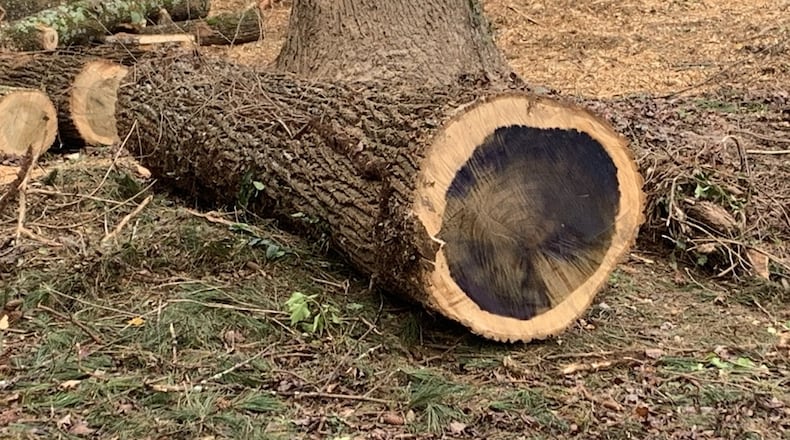Q: Why do many tree trunks and limbs have a dark core in the middle? Gus Callaway, Decatur
A: As a tree gets older, the woody tissue of the trunk and limbs divides into two zones: heartwood and sapwood. Heartwood cells usually contain tannins or other substances that make it dark colored and sometimes aromatic. Heartwood is resistant to decay; often it’s the only thing left when a pine trunk is left to decompose. This “fatwood” is saturated with resin and is great for fire-starting. Sapwood is lighter in color. This sapwood is where water and dissolved minerals are transported between the roots and the crown of the tree and, to a lesser extent, where excess food is stored.
Q: I saw your article on making a butterfly puddle and it looks easy. What kind of sand do I use? Can I mix it with something other than manure? Marlene Fellows, email
A: I used regular play sand. Honestly, anything will work since all you’re trying to do is make a shallow puddle. Instead of manure, you could use Milorganite or Holly-Tone fertilizers. Any organic fertilizer would contain the minerals and electrolytes that butterflies relish. The puddle dries out pretty quickly in hot weather, so I’ve added a 2-liter plastic drink bottle with a pinhole in the bottom that drips water into the saucer during the day.
Q: I have a very large magnolia in the middle of my front lawn. I like the tree but there are always dozens of brown leaves on the grass. Is there a way to stop the shedding? Gloria Zerby, email
A: This is exactly what happens with magnolia trees. Leaves fall from the tree sporadically all year or all at once and they make a mess. The leaves are so thick that it takes a while for them to decompose, even when shredded. Most people just rake them under the tree and let nature deal with the leaves. Find yourself a teenager who knows how to use a rake and be done with it.
Q: Starlings are eating the mealworms from our bluebird feeder. Is there any way to discourage them? Jean Machen, Marietta
A: I had the same problem. I found a solution online: a mealworm feeder with a cage around it that starlings cannot penetrate. I taped a long-necked funnel to the cage so I could slide a handful of mealworms into the center without having to take it apart. Works like a charm and the bluebirds are happy!
Walter’s email address is georgiagardener@yahoo.com. Listen to his comments at 6:35 a.m. on “Green and Growing with Ashley Frasca” Saturday mornings on 95.5 WSB. Visit his website, www.walterreeves.com, or join his Facebook Page at bit.ly/georgiagardener, for his latest tips.
About the Author
The Latest
Featured

